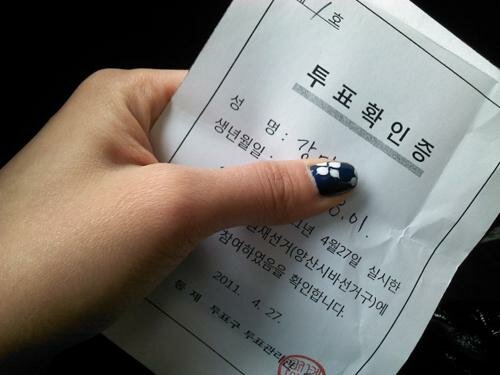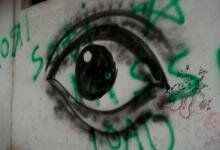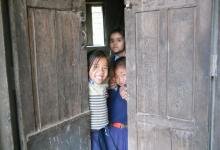Twitter Draws Youth to South Korean Polls
South Korea's ruling suffered a crushing defeat in recent by-elections, heralding the power of Twitter in the political landscape.

Throughout the election, many young, progressive Twitter users uploaded so-called “vote confirmation photos” from the polls to prove they have cast a ballot, and encourage others to vote.
It was neither a presidential nor major parliamentary election, which means that young voters were not expected to make an impact. The average voting rates for by-elections are usually only about 30%, and in some regions even less. Young voters in their early 20s to late 30s usually vote least of all. But this year it was different.
A celebration of the right to vote
On April 27, starting from the early morning, young people queued at the polls braving the rain, while the Twittersphere buzzed with links to photos of people holding their official voter registration paper or voting receipt.
A photograph in front of a billboard telling the direction to the voting booth was another way of taking the photo. Other popular shots were to take a picture of the special national election voting stamp mark on thumbs or palms. Some overly enthusiastic people went a little too far, photographing the ballot inside the voting booth, which is illegal and carries a fine.
Power Tweeters in South Korea have played a tremendous role in encouraging young people to vote. South Korea's best-selling author and one of the country's most influential Twitter users, Lee Oi-soo with 739,469 followers, also shared his vote confirmation photo.
The Twitter voting campaign was not in support of any particular party or individual, but rather encouraged people, especially the youngest voters, to participate in the election. As a result, the election on April 27 experienced a higher-than-expected voter turnout of near 40%, a surge of approximately a seven percentage points from the average since 2000.
One reason the voting rates for by-elections are usually extra low, is that people do not get the day off to vote.
One reason the voting rates for by-elections are usually extra low, is that people do not get the day off to vote. One local news report estimated [ko] that in order for an average office worker to cast a vote in a by-election, they have to get up at around 5:30 am in order to arrive at the poll by 6:30 am and get to work, which begins at 7 am.
Defeat for the ruling party
One candidate from the ruling conservative Grand National Party, suffered particular defeat in the election: Ohm Ki-young, a former news anchor president of network TV channel, MBC. Ohm has been harshly criticized for entering the conservative party, since many South Koreans remember his progressive opinions from his news program, and see the political shift as an opportunist move.
Sun Dae-in (@kennedian3), another power Tweeter with 37,500 followers, and assistant dean of the Kim Kwang-su Economic Research Institute, tweeted victoriously on the morning of April 28:
Throughout this election, I have realised again the immense power of Twitter and social media. The true nature of candidate Ohm Ki-young –his ineptitude–has spread far and wide via social media. The voting campaign in the Twittersphere has contributed to the higher voting rates. Social media has gathered individual drops of water together and formed them into rivers and sea.
Sun commented further [ko] on Ohm's defeat:
In this election, Ohm Ki-young's defeat, more than Gov. Choi Moon-soon's winning, speaks volumes. His defeat can be interpreted as the people's judgment on an opportunist politician who succumbed so helplessly to power on the path to dominate the media. And it is also the citizen's judgment on a series of election frauds and Ohm's incompetence, although Ohm hid himself behind his grand image… All this success was spearheaded by social media.
Sun later added [ko] that more than 100 people have sent him their vote confirmation photo.
Lee Mi-ah (@miaendless) commented on Twitter [ko] that this by-election is a milestone case which showed an ever-widening gap between the traditional media and social media coverage.
I have never seen such an election, where the contents and perspectives of the mainstream media and those of social media differ this greatly. While TV and paper news evoked a serious sentiment and tried to dilute the truth and underestimate the situation [note: referring to corruption cases], social media users went another way and took “vote confirmation photos”. The world has truly changed. This relatively new concept of a Twitter campaign has drawn serious warnings from the National Election Commission, which is not familiar with people's voluntary movements on Twitter.
Freelance journalist and the owner of a malguli (rice liquor) store, Lee Yo-yong (@yiyoyong) with nearly 5,000 Twitter followers tweeted [ko] that she was contacted by confused officials:
The election committee called me and asked “You have done some voting-promotion events. What is your motive? What is your intention and do you have any relation with particular party?” They also asked, “What is the Wol-hyang party?”
Wol-hyang is the name of the liquor store owned by Lee, which helps to show the depth of the National Election Commission's confusion. In Korean Twittersphere, the word “party” as in Democratic party or conservative party, has lost its political connotation and is being widely used to refer any gathering of like-minded people with similar interests. Many responded to Lee on Twitter, that this really shows that their social media guidelines are in need of an update [ko].
This post was originally published on Global Voices in May 2011.

















